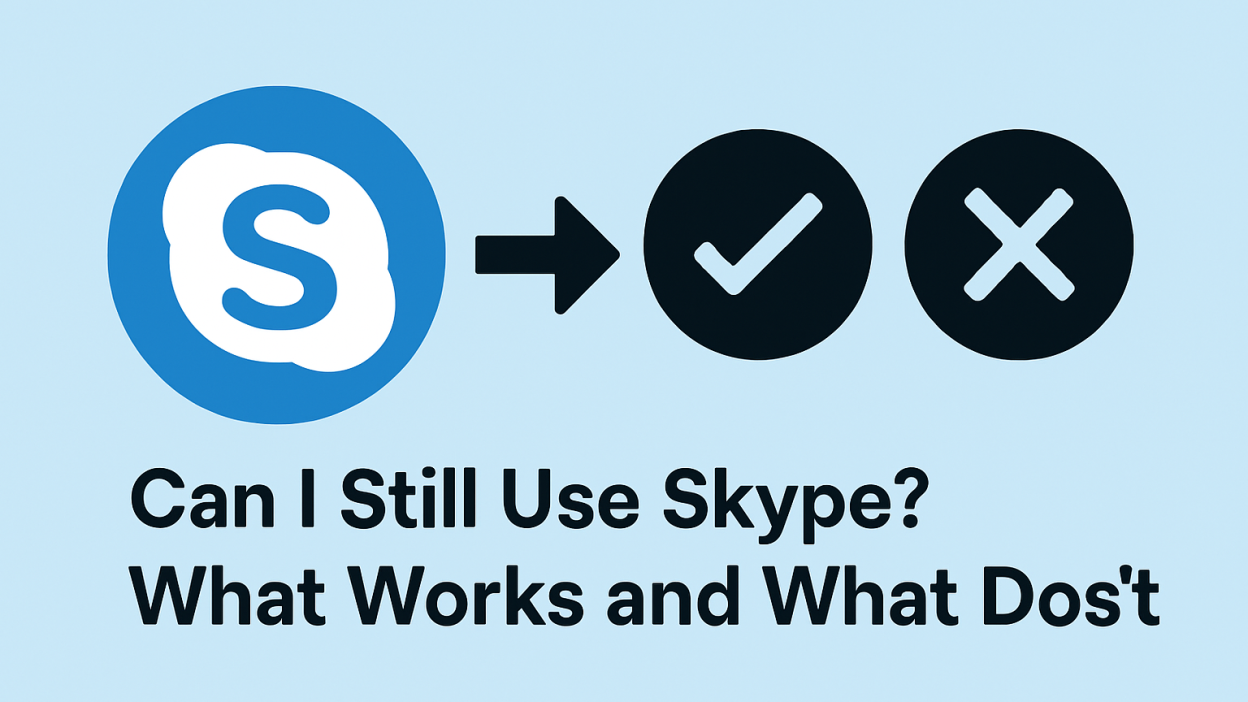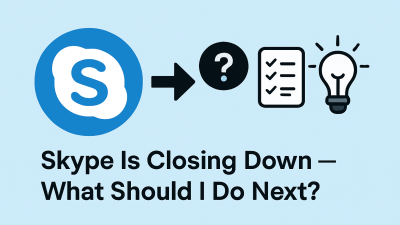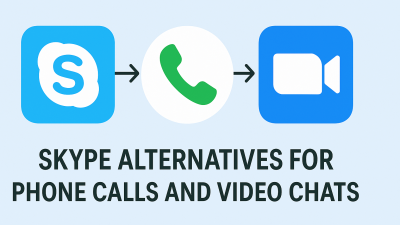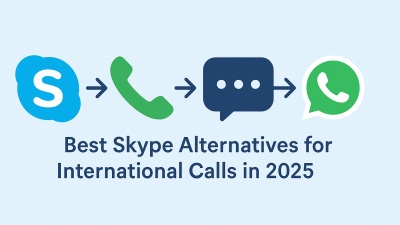You click the app. Your familiar contacts load. That blue interface, the one you’ve known for years, still opens like nothing’s changed. But you’ve heard the whispers. You’ve seen the news. And now you’re wondering: is this the last stretch for Skype, or is there more time than people are saying?
The truth is simple. Yes, Skype still works right now. You can make calls, send messages, and use your remaining balance. But every day you keep depending on it, you’re leaning into something Microsoft is slowly winding down.
And not all the cracks are obvious. Some changes are already in motion, and you might not realize what’s broken until you need it most.
This isn’t a panic piece. It’s a practical breakdown. We’ll walk through what’s still usable, what’s been quietly deprecated, and how you can stay ahead, instead of getting locked out when the lights finally go out.
Skype Will Stop Working Completely on May 5, 2025 — But Its Pullback Started Long Before That
The official shutdown date, May 5, 2025, is just the finish line. Behind the scenes, the slow dismantling has been happening for a while.
Microsoft hasn’t been releasing meaningful Skype updates in over a year. Support resources are disappearing. Users are being redirected to Microsoft Teams Free, with a subtle but steady push. Even small signs, like no new features, reduced app store visibility, and redirected help pages, all point in one direction.
If you’ve been noticing small bugs that don’t get fixed, or contact syncing that seems glitchy, or login loops that didn’t used to happen, this is why. Microsoft’s priority has shifted. Skype is no longer on the roadmap.
But here’s the part that matters: you still have control. You’re not being cut off overnight. You just need to know what works, what doesn’t, and what you should be backing up or replacing, starting now.
What You Can Still Do in Skype (As of Now)
If you’re reading this before the May 2025 shutdown, Skype still lets you do a handful of things reliably, but mostly in a limited, transition-state form.
You can still make voice and video calls to people on your contact list. You can send text messages, use emojis, and even transfer basic files. These core functions haven’t been switched off yet.
If you’re a paid user with Skype Credit, it still works for now. You can call landlines or mobiles internationally, just like before, as long as your credit hasn’t expired and your subscription hasn’t hit the renewal deadline.
Also, you can continue talking to other Skype users, and even Teams Free users, at least during this crossover window. That’s Microsoft’s temporary bridge. It won’t last forever, but for now, cross-app communication is still live.
But here’s where it gets tricky: the “it still works” experience depends heavily on how you use Skype. If you’re a light user doing quick chats, you might not feel the shift yet. But for people making international calls or relying on Skype links, the degradation is already clear.
What’s Already Been Stripped Out or Redirected
It’s not always announced in a banner or email, but core features are vanishing. Quietly.
If you’ve tried to use Skype’s “Meet Now” feature recently, the one where you could share a link for instant calls, you might’ve noticed it redirects. Those links no longer open Skype meetings. They now lead to Microsoft Teams.
The Skype Dial Pad, once essential for calling phones, is disappearing from the core app. It’s only accessible inside Teams Free, and even then, only for users who had existing Skype Credit or subscriptions.
You can’t purchase new credits as a new user. If you’re already subscribed, your services will last until your next renewal date, but after that, it’s done.
That old familiar model, open the app, top up credit, call anywhere in the world, that model is sunsetting. Quietly, but decisively.
And for longtime users? There’s no replacement inside Skype itself. Microsoft isn’t building new features. They’re building a door that leads somewhere else.
You Can Still Export Your Skype Data — But Only For a While
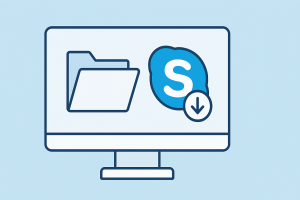
This part is critical, especially if you’ve used Skype for work or long-term personal conversations.
You can request a full export of your Skype chat history, call logs, and file transfers using Microsoft’s data export tool. This option is still available, but only until early 2026. After that, the servers holding that data will be taken offline.
Exporting your data doesn’t import it into Teams; that’s a common misunderstanding. You’ll receive a download link with your files in a readable format (usually HTML), but you won’t see those conversations inside the new Teams chat window.
This export isn’t about making Skype portable. It’s about preserving the past before it’s gone.
What’s the Experience Like for International Callers?
This is where Skype’s slow fade becomes most noticeable and most frustrating.
For years, Skype was the go-to tool for international calls. It worked on slow connections, didn’t require the other person to install anything, and offered decent audio at budget-friendly rates.
But now? The cracks are showing.
The dial pad isn’t always available. Credit top-ups are limited. And Teams, while technically offering call options, isn’t optimized for that kind of usage. You have to hunt for the dial pad. You need to navigate menus just to make a basic call. It’s not built for fast, repeatable use.
That’s why a growing number of ex-Skype users are turning to services like MyTello, not because it’s flashy, but because it actually works the way Skype used to.
You sign up. You get low rates. You make calls. No apps, no logins, no overbuilt dashboards. Just the same functionality that people counted on Skype for, without the noise.
This isn’t about promoting something new. It’s about acknowledging what’s missing and where people are finding the closest thing to what they had.
If Skype Is Your Only Communication Tool — It’s Time to Build a Bridge
There are people who’ve used Skype as their primary tool for staying connected. Maybe you’ve built a small client base on it. Maybe it’s your go-to for overseas family calls. Maybe it’s just what you’ve always used, and switching feels like a disruption you didn’t ask for.
The shutdown isn’t about whether you want to move. It’s about whether you’re prepared when Skype simply no longer opens. And if it’s been your main tool, even for just one thing — that’s a real risk.
Now is the moment to start building the bridge. Not to rush a decision, but to give yourself time to try options and see what fits, while Skype is still working.
That’s the difference between adapting and scrambling.
Is Microsoft Teams a Real Replacement?
This is Microsoft’s official answer: Yes. But what about from the user’s perspective?
Microsoft Teams Free does offer:
-
Messaging
-
Voice and video calls
-
Contact syncing (if you sign in with your Skype credentials)
-
A dial pad for users with legacy Skype credit
That all sounds promising, until you try using it the way you used Skype.
Teams were built around teams, not people. The interface assumes structure: spaces, channels, collaboration, and task flow. It’s not designed for a single-click international call. It’s not built for quick file transfers to friends. And it’s not focused on simplicity.
So while Teams includes communication tools, it doesn’t prioritize them. And for users who just want fast, familiar, personal communication? It can feel cold, slow, and overly complex.
If you’re already using Microsoft 365 and work inside that ecosystem, Teams might work as a seamless fit. But if you’re here because you’re trying to replace what Skype gave you, without adding five extra layers, this may not feel like home.
The Hidden Challenge: Telling Your Contacts It’s Time to Move
One thing people don’t always think about during a platform shutdown is the people on the other end.
If Skype is your link to family in another country, or a client who only calls you on a specific ID, the switch isn’t just about your experience, it’s about theirs, too. And if you wait until May to figure this out, they might not hear from you at all.
The smart move is to start telling people now.
Let them know Skype is closing.
Let them know what tool you’ll be using next.
And give them time to test it with you.
That could mean setting up a test call on Teams, or just giving them a new phone number or app contact through another platform.
The sooner you do this, the smoother the transition. Because when May comes, Skype’s not going to leave a note behind.
If You Use Skype for Calling, Consider Moving in a Different Direction
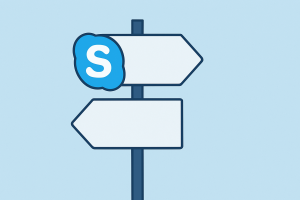
This is where it helps to separate what you used Skype for from the app itself.
Many users weren’t using Skype because they loved the interface. They used it because it worked. It made international calling cheap, flexible, and accessible. You could call a landline in five seconds. You could talk for an hour and pay a fraction of what mobile carriers charged.
So if that’s what you were using Skype for, why not find a tool built specifically for that now?
Services like MyTello exist because of that exact need. Not to replace chat apps, not to be a business collaboration suite, but to keep long-distance calling simple and affordable.
What makes it worth looking into:
-
You don’t need the other person to install anything
-
Works with landlines or mobile phones
-
International rates are clearly posted, no surprises
-
Setup is fast, you can test it for free before switching
A lot of users who once defaulted to Skype for family calls are now finding MyTello fits that same space, without all the new layers Microsoft is trying to add.
Teams may be the official replacement. But it’s not always the best fit. Especially when all you want to do is pick up the phone and connect, without needing a user guide.
What Real Users Are Saying About the Shutdown
Forums, Reddit threads, comment sections, they’re full of people trying to figure this out in real time.
Some are frustrated:
“Teams is too bulky. Skype was faster.”
“Why can’t Microsoft just keep Skype running as a standalone app?”
Others are making the jump and adjusting:
“Once I logged into Teams with my Skype credentials, most of my contacts showed up.”
“I like Teams now, but I had to shut down all the stuff I didn’t need.”
And some are already out:
“I’m using MyTello now for calls and Signal for chats. Done with Microsoft apps.”
These stories matter because they remind us, you’re not the only one navigating this. But also, there isn’t one answer for everyone. You get to decide what fits your needs best.
The Clock Is Ticking — What You Should Do Now
You don’t need to delete Skype today. You don’t need to migrate everything in one afternoon. But you do need a short checklist, because the window is closing.
Start with this:
-
Export your chat history if there’s anything worth saving
-
Use your remaining Skype Credit if you have any left
-
Sign into Teams using your Skype email, just to see what transfers
-
Make one or two test calls or chats using Teams Free
-
Try an international call with an alternative like MyTello, see how it compares
-
Most importantly, let your contacts know where to reach you next
This isn’t about rushing. It’s about staying ready. So you’re not cut off from people who matter just because a platform got sunset without warning.
Final Thoughts: It’s Still Skype — But Only For a Moment
Right now, Skype still works. The logo still loads. The call still connects. But behind the scenes, the foundation is already being pulled apart. You can use this moment to plan, test, and move at your own pace. Or you can wait until May, and scramble to figure it out after Skype disappears. There’s no prize for hanging on until the very last second. But there is peace of mind in knowing you’ve made the right move before you were forced to.
Whatever you choose next, whether it’s Teams, MyTello, or something else entirely- make sure it serves you. Not just Microsoft’s roadmap. Because tools change. But your conversations, the people on the other side of the call, they’re the part that matters. Don’t let them get lost in the transition.

